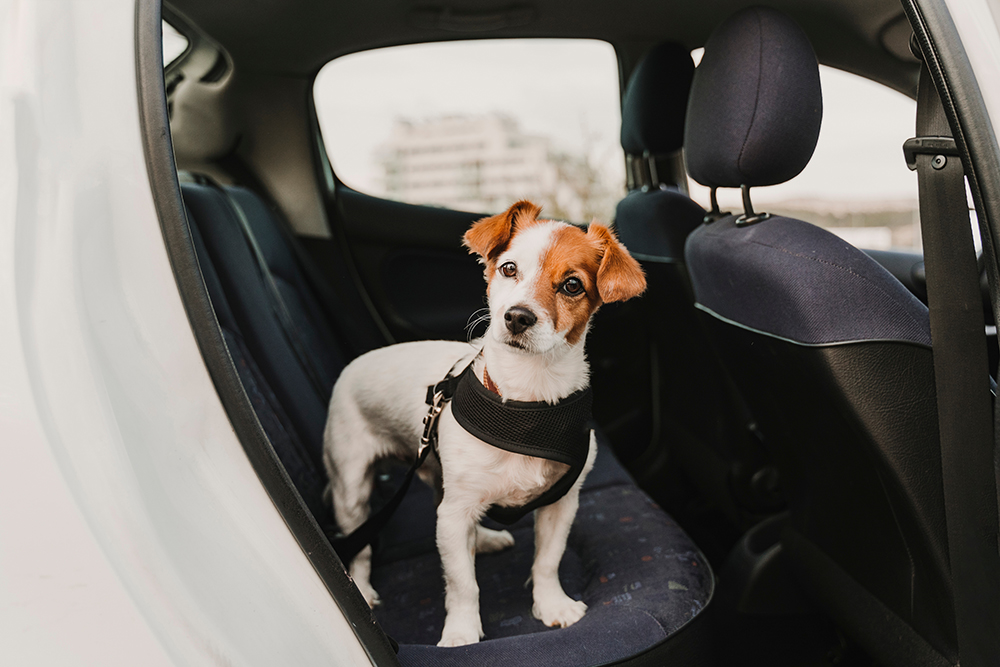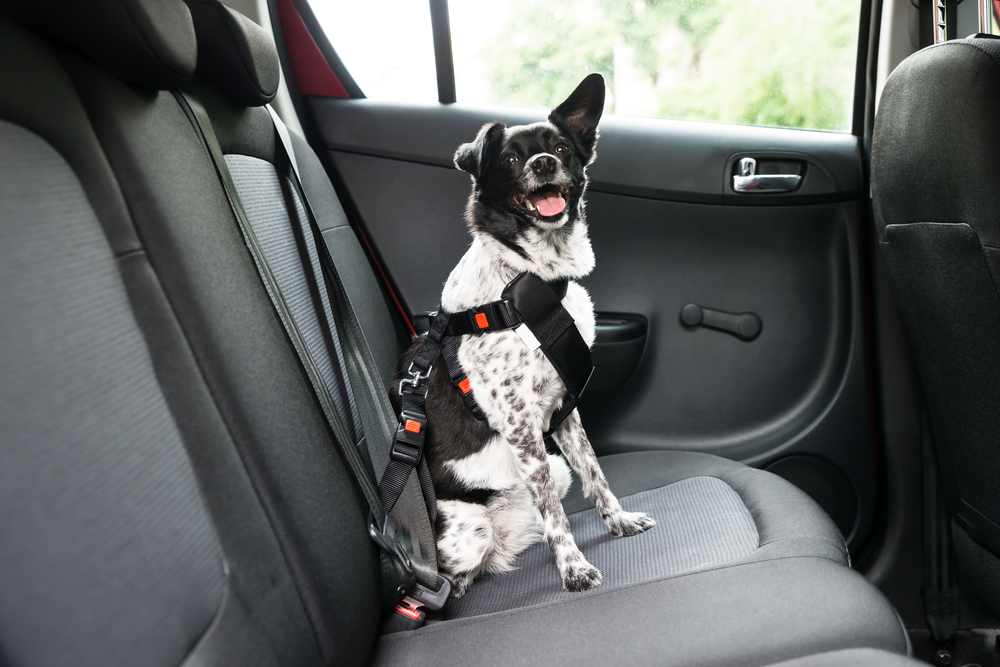When people envision dogs and cars, they’ll often think of a happy dog poking their head out the window and enjoying the breeze. However, not all dogs will enjoy car rides, and they can even get car sick.
Dogs can experience car sickness for a variety of reasons. Sometimes, it’s a physical reaction, while some dogs may feel car sick due to psychological reasons. Understanding why dogs get car sick can help you prevent your own dog from getting car sick and instead enjoy comfortable car rides with you.


Reasons Dogs Get Car Sick
The full reason for motion sickness is not yet understood but is thought to be related to a dog’s inner ear, eyes and sensory confusion. Dogs will start to feel car sick when their inner ear is stimulated or disturbed. The inner ear is connected to the vomiting center of the brain stem, which causes dogs to feel nauseous.
It’s common for puppies to feel motion sickness because it is a new experience for the nervous system to learn about. Therefore, many puppies will grow out of motion sickness and no longer feel it when they’re fully grown. However, adult dogs can still experience car sickness.
Sometimes, car sickness is caused by psychological reasons, particularly anxiety. Dogs can feel anxious when they get into the car, and this stress can cause them to feel sick and experience symptoms of car sickness. It’s common for dogs with negative first experiences with car rides to continue to start feeling car sick, even if the car isn’t moving.




Signs Your Dog Is Car Sick
Most dogs will show signs of nausea when they feel car sick. Dogs that feel nauseous will be panting, licking their lips, or swallowing or gulping the air. Other signs that dogs are car sick include yawning, whining, excessive drooling, and vomiting. Your dog will also show signs of uneasiness and may become restless or curl up and try to hide.


Tips for Dogs and Car Sickness
Car sickness is an unpleasant experience for both dogs and their owners. Fortunately, there are some things you can do to help your dog feel better during car rides.
Medication
You can consult your veterinarian to see if any over-the-counter or prescription medication can help reduce motion sickness signs. They can also prescribe medication that helps reduce vomiting and keep dogs calm. Available products range from anti-anxiety supplements and sprays to prescription medications for more severe distress.
💛 🐶 Speak To a Vet Online From the Comfort of Your Couch!


If you need to speak with a vet but can’t get to one, head over to PangoVet. It’s an online service where you can talk to a vet online and get the personalized advice you need for your pet — all at an affordable price!
Lower the Windows
You can make car rides more enjoyable by lowering your car windows a few inches. Many dogs appreciate a cool breeze, and letting outside air in can help balance your car’s air pressure with the outdoor air pressure. This can help reduce discomfort and overstimulation of the inner ear.


Get Your Dog Acclimatized
It’s also helpful to get your dog comfortable with car rides. Try getting your dog used to car rides by gradually building up your dog’s tolerance for them. Depending on the individual you may need to just start with popping them into the car for a few moments and not going anywhere, build up to starting the engine and then a 2-minute car ride around the neighborhood and work your way up to increasing the length of time your dog is in the car. Make sure to take your dog to fun places they enjoy, like parks or your friends’ homes. This will build positive associations with car rides as your dog gets rewarded with something fun after being in the car.
You can also place your dog in a crate or car seat to help them feel more safe and secure while you drive. Sometimes, placing toys and blankets in the car can help dogs feel calmer and more comfortable.
Refrain from Feeding Before Car Rides
Lastly, refrain from feeding your dog any food 3 hours before they need to ride the car. Eating food right before a car ride will increase the risk of your dog feeling sick and vomiting.


Conclusion
Dogs can get car sick due to a physical condition or from fear or anxiety. Understanding what’s causing your dog’s car sickness will help immensely with getting your dog comfortable with car rides. It’ll take some time, training, and experimenting, but it’s possible to find ways for your dog to ride in cars while reducing occurrences of car sickness.
It’s best to start by getting your dog examined by a veterinarian. Your veterinarian can diagnose the cause of your dog’s motion sickness and point you in the right direction for getting your dog to feel more comfortable when they’re inside a car.
Featured Image Credit: Aleksey Boyko, Shutterstock






